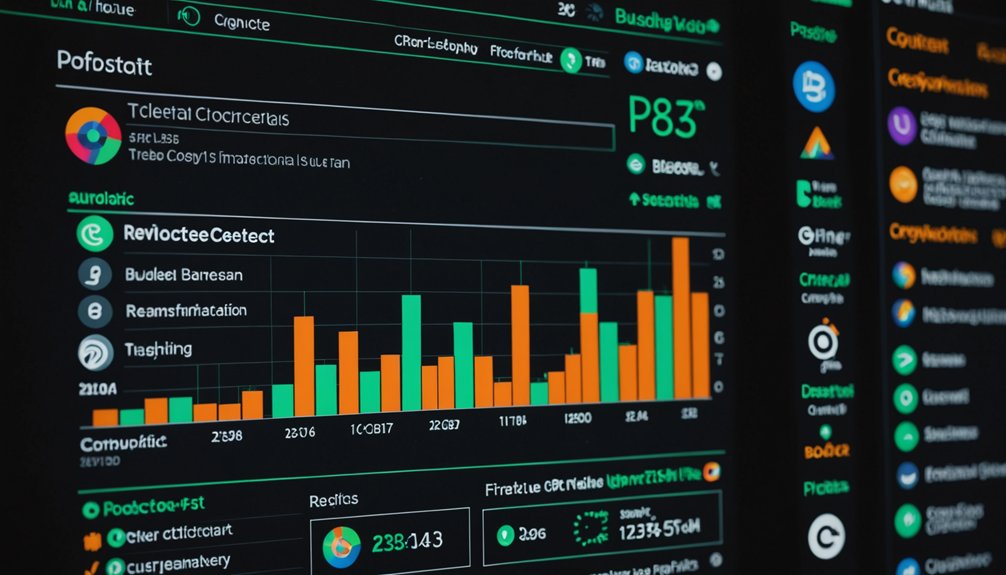Content repurposing maximizes SEO impact without extra work. Smart marketers identify high-performing pieces using analytics tools, then adapt them across platforms. They transform blog posts into infographics, videos, or social snippets while maintaining strategic keyword placement. No keyword stuffing allowed—keep it natural. Short sentences and logical organization help both readers and search engines digest information easily. Creating content libraries and implementing topic clusters systematically boosts crawl rates. The difference between mediocre and stellar rankings often lies in how effectively existing content gets recycled.

Why create new content when you already have a goldmine sitting right under your nose? Content repurposing isn’t just smart—it’s essential for any business that wants to maximize their digital footprint without working themselves to death. The data doesn’t lie. Tools like Google Analytics, Ahrefs, and SEMrush show exactly which content pieces are already performing. Use them.
Content that consistently attracts engagement deserves new life. It’s that simple. Don’t waste time on mediocre material when your analytics clearly point to what works. The stuff people already like? That’s your ticket. Repurpose it. Now. Creating long-tail variations of successful content helps capture more specific search intent and expand your keyword reach.
Platform adaptation matters more than ever. A blog post that performed well won’t automatically translate to Instagram success. Duh. You need to tailor content specifically for each platform’s unique environment. Sometimes that means turning text into eye-catching infographics. Other times it means condensing information into 30-second video clips. Whatever. Just make it fit. Implementing product visibility strategies across platforms can significantly boost customer engagement and sales.
Keywords aren’t optional. They’re mandatory. When repurposing content, strategic keyword placement can dramatically improve SEO rankings. But don’t be that person who stuffs keywords until the content reads like robot vomit. Nobody wants that. Place them naturally. Check what competitors are doing with similar content. Then do it better.
Structure matters, even without formal subheadings. Short sentences work. They create impact. Organize information logically so even skimmers get the point. Because let’s face it—most people don’t read every word anyway.
Existing assets are gold mines. Webinars become blog series. Presentations transform into infographics. That dusty podcast episode? It’s tomorrow’s viral social post. Create content libraries for efficient reuse. Take inventory of what you already have. It’s probably more than you think. Regularly refresh and update old content to maintain relevance and improve SEO performance over time. Frequent publishing of repurposed content leads to higher crawl rates from search engines, helping your site get indexed faster.
A solid repurposing strategy ties everything together. Plan it out. Use topic clusters to organize related content. Implement a calendar to track what’s being repurposed and when. Because random acts of content marketing rarely succeed. But systematic repurposing? That’s how you win the SEO game without losing your mind.
Frequently Asked Questions
What Tools Can Help Automate Content Repurposing Workflows?
Automating content repurposing? Several tools can handle that tedious mess.
Automata monitors channels and creates content automatically—pretty slick. MeetEdgar specializes in scheduling social media reposts.
Recast Studio and Kaltura focus on video repurposing with AI. Workflow tools like Trello or Asana keep everything organized.
Zapier connects different apps. Canva handles visuals. Quillbot rewrites text.
The right combo of these tools? Content recycling on autopilot. No more manual drudgery.
How Much Should Content Be Altered When Repurposing for SEO?
When repurposing content for SEO, balance is key. Keep core themes intact—that’s your foundation.
Update outdated info. Period.
Format shifts work wonders: blogs to videos, articles to infographics. Why not?
Keyword relevance matters. Always.
The sweet spot? About 30-40% alteration. Enough to feel fresh without losing original value.
Too much change? You’re writing new content.
Too little? Search engines yawn.
Different platforms need different tweaks. Mobile optimization isn’t optional anymore. It’s 2023, folks.
Can Repurposed Content Hurt Rankings if Done Incorrectly?
Absolutely. Poorly repurposed content can tank rankings fast.
Search engines aren’t stupid – they spot duplicates and thin content like a hawk. When creators just copy-paste with minimal changes? Penalties happen. The algorithm doesn’t care about excuses.
Thin content, excessive similarity, outdated information – all red flags.
Different platforms need different approaches, not lazy reformatting. Without substantial differentiation, sites risk confusion among users and search engines alike.
Performance metrics suffer. Rankings drop.
It’s that simple.
How Often Should Evergreen Content Be Updated and Repurposed?
Evergreen content needs rejuvenating every 9-12 months. Period.
High-intent stuff? More like every six months. The data’s clear: page-one content typically gets updated within 1.31 years. Not rocket science.
Traffic peaks 1-3 months post-republishing and can ride that wave for up to a year.
When numbers start tanking? Time for an update.
Repurposing should follow the same timeline. Turn that article into videos, infographics, whatever. Just keep it new, people.
What Metrics Indicate Successful Content Repurposing Campaigns?
Successful content repurposing shows up in the numbers. Period. Engagement rates don’t lie – likes, shares, comments tell you what’s working.
Organic traffic spikes? That’s a win. Conversion metrics matter most to the suits upstairs. Social shares indicate real-world appeal.
Time on page reveals whether people actually care. Platform-specific metrics vary: YouTube needs views, podcasts need listens. Revenue alignment is essential.
Some stuff’s hard to track though – dark social sharing remains marketing’s blind spot.




